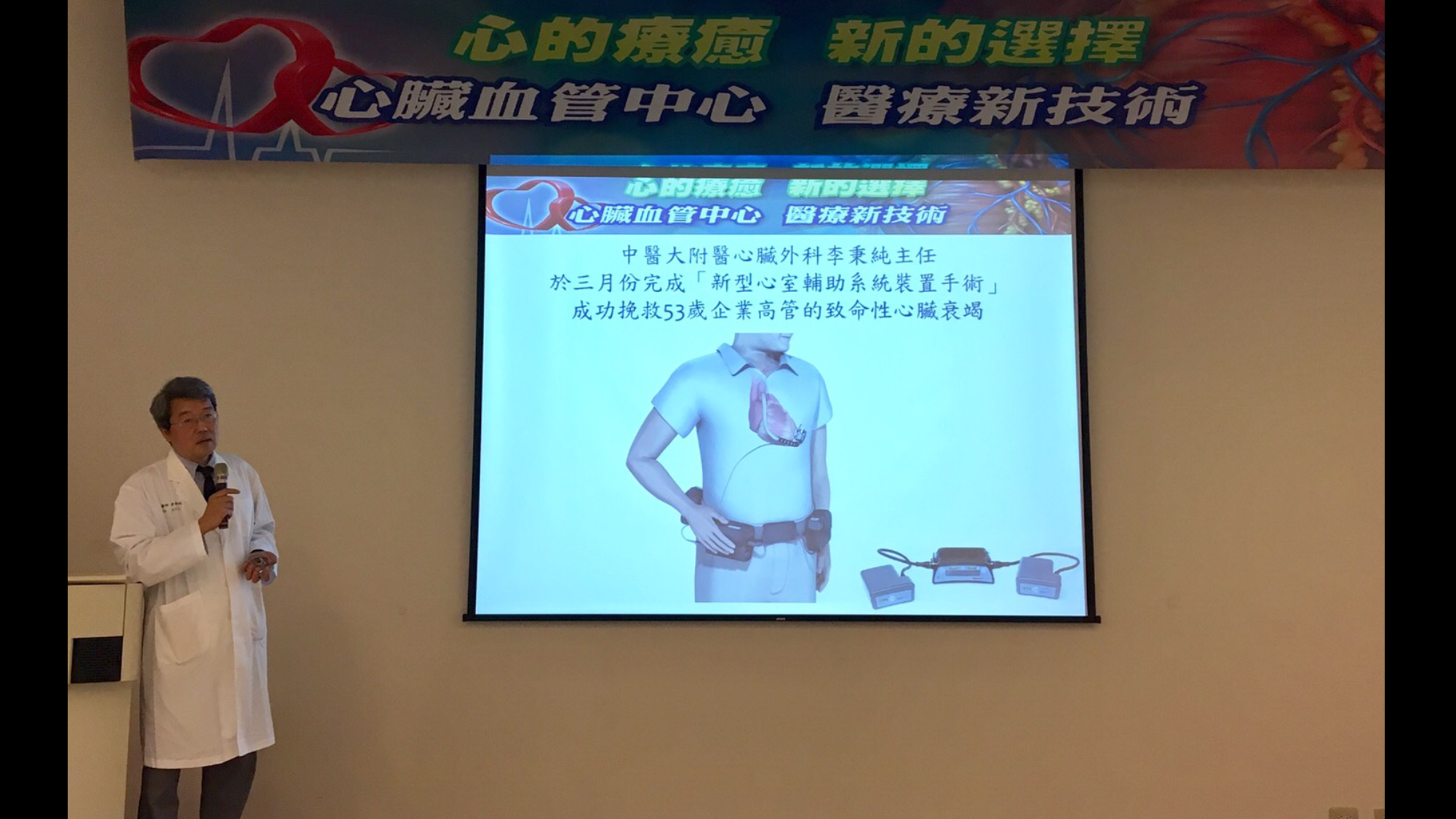News and Award
About CMUH
Implantation of the latest ventricular assist device saves life

Chief of Cardiac Surgery, CMUH, Dr. Ping-Chun Li successfully saved a patient from dying of terminal heart failure by implanting the latest left ventricular assist device this March.
Implanting a ventricular assist device prolongs life
The 53 year old corporation senior executive who smokes, drinks, leads a stressful life and does not exercise, is at high risk for coronary artery disease. One day last August when acute chest pain and cold sweat struck and he was rushed to emergency room, perhaps not unexpectedly, he was diagnosed with acute myocardial infarction. In the cath lab, a stent was inserted promptly to open the blocked coronary artery and his chest pain was relieved. However, breathlessness and leg swelling developed gradually in the following months. He could neither walk nor lie flat when sleeping, his daily activities severely restricted. Hospitalization became a monthly ritual to receive cardiotonic shots and diuretics for his heart failure. The condition culminated in an episode of ventricular fibrillation and shock, from which he was resuscitated. He was then referred to CMUH for further management.
His left ventricle was found to be massively dilated and its contractile function was less than one third of normal. A heart transplant seemed to be the best option, one year survival of more than 20 cases at CMUH being 88%. But the practicability of this procedure is hampered by donor scarcity, and a typical waiting period lasts 3 to 6 months. In all honesty, he may not survive that long without additional treatment. After a discussion with the doctor, he decided to receive surgical implantation of the latest left ventricular assist device, which will be life-sustaining for him, with the additional merit of maintaining mobility and ability to work while waiting for his new heart.

High operation success rate and record of prolonged survival for mmore than 9 year on the device
Ventricular assist device is a pump that helps the weakened heart to propel blood to the body. It is used to treat patients with refractory heart failure either as a bridge to transplant or destination therapy. The device itself has undergone much improvement over decades. The implantable part of the latest version is now only the size of a golf ball, and has been introduced into Taiwan recently. Because of its small size, the implantation procedure is simplified. It is inserted into left ventricle and fixated at the apex. Pump outflow is directed to aorta through an artificial blood vessel. Whatever necessary output that cannot be achieved by the impaired ventricle is now taken over by the pumping action of the device. With normalization of cardiac output, functions of organs such as liver and kidney are preserved and patients can enjoy unlimited activities of daily living. To date, there has been a record of patient survival for more than 9 years with the device in place.
As anticipated, the patient was discharged symptom-free within 2 weeks after surgery. He has now gone back to work and functioned normally as he used to.
Dr. Ping-Chun Li, Chief of Cardiac Surgery



![[Taiwan–Malaysia Medical Innovation Forum] CMUH and UNIMAS Co-Host Major Medical Symposium to Advance Medical Technology and Precision Patient Care img](/FileUploads/News/20250714_131324.jpg?w=250&h=180&mode=crop&scale=both)